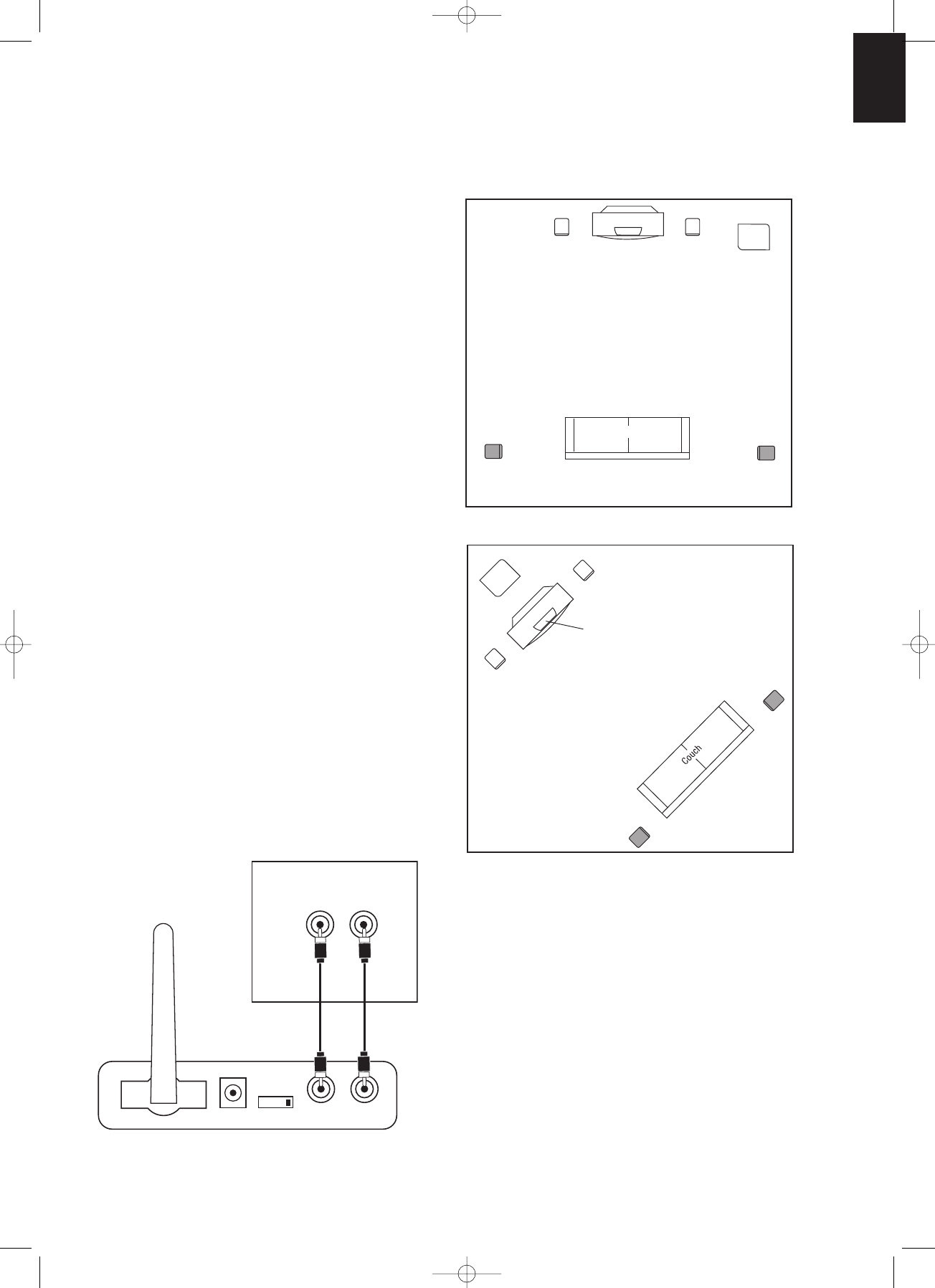
5
English
Notes: For the sake of simplicity, throughout this manual we have
used the term “source” when describing connections and operation.
This would apply to any device such as an A/V receiver, audio
component, computer or portable music player.
The JBL On Air Control 2.4G is designed for use in most countries
worldwide, depending upon local regulations.
It includes 120V – 230V, 50/60Hz universal power supplies for the
transmitter module and the active speaker. While we have included
the two most commonly used AC cords with this product, your AC
electrical outlet may require the use of a different AC cord. For your
safety, it is essential to use an AC cord that is fully compatible with
your local electrical system. When in doubt, please consult your
local JBL dealer or distributor.
The JBL On Air may be connected to your source in several ways.
First, determine how you would like to use the JBL On Air
Control 2.4G; then follow the setup instructions for that application.
Application 1
Adding surround speakers to a home theater system.
Continue reading the instructions for Application 1 below.
Application 2
Adding speakers to remote locations around your home.
Application 1
Adding surround speakers to a home theater system:
Determine if your source contains preamp outputs for rear/surround
channels, usually indicated by RCA-type jacks on the back of the
receiver labeled as “surround preout” (please refer to your source’s
owner’s manual to confirm whether it includes the preamp outputs).
If your receiver includes these outputs, follow the steps below.
If not, connection is not recommended.
Note: Make sure power is turned off on all components.
Step 1.
Connect the interconnect cable (included) to the left and right
surround/rear preamp outputs on the back of your source and the
input on the transmitter module
D
, as shown in Figure 1.
CONNECTIONS
Left Rear
Channel
Left
Surround
Channel
Right
Surround
Channel
Right Rear
Channel
Center Rear
Channel
Left Front
Channel
Subwoofer
Right Front
Channel
Center
Channel
Couch
Left
Surround
Channel
Right
Surround
Channel
Left Front
Channel
Subwoofer
Right Front
Channel
Center
Channel
INPUT
RL
R
L
ID
CODE
1234
Surround Channel
Preamp Outputs
RECEIVER/PROCESSOR
Figure 1.
Step 2.
Determine the location of the surround speakers.
Figure 2. Place the active (left) speaker in the recommended
location for the left surround speaker.
34199_Control_2_4G_Eng 02/08/07 14:07 Side 5














